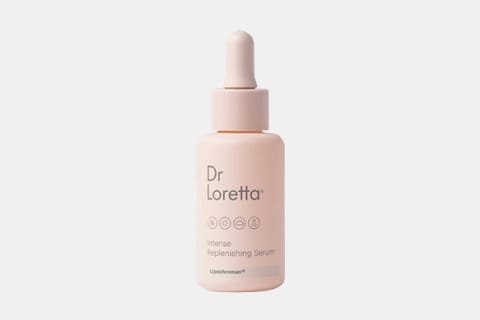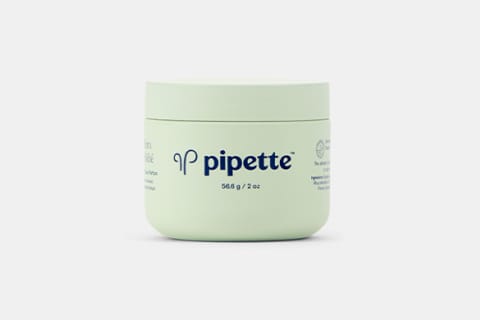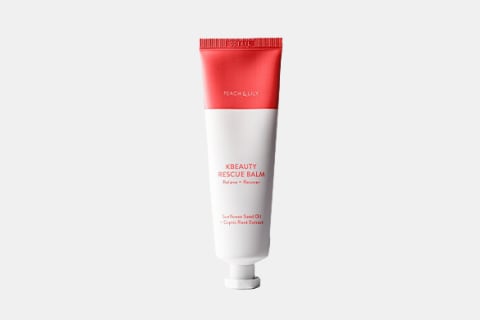What Is Slugging & Should You Try It? Let's Explain The Slimy Skin Care Technique

"My face was sticky going to bed. I looked like a snail. An invertebrate. I thought I might grow eye-stalks. My roommate asked me why I looked like I just came out of a birth canal." No, this is not the opening scene of a surrealist novel but rather a Redditor describing their first experience with slugging—a skin care trend that has beauty aficionados greasing up their skin with cosmetic-grade petroleum jelly, all in the hopes of seeing a glowing, supple face by morning.
Will you look a bit sluglike as you shimmy into bed? Probably. But in the name of dewy, soft skin, it may be worth it. Let's break down everything you need to know about slugging, including whether it suits your skin type and how to do it right.
What is slugging?
Slugging is a skin care technique where you slather on a heavy-duty occlusive (typically Vaseline or another petrolatum product) as the last step of your nighttime routine to prevent transepidermal water loss. The jelly balm creates a slimy film over your pores so you look dewy and almost slippery—you know, like a slug.
The term itself popped up on Reddit's Skincare Addiction thread around 2018, credited as a K-beauty trend. Although, "I didn't see it originate from Korea," says Alicia Yoon, celebrity esthetician and founder of Peach & Lily. "It's really from the online community of people from all over the world." It's rife among K-beauty blogs and skin care forums, not necessarily stemming from Korean derm and esthetician offices themselves.
However! Slugging keeps the skin hydrated and the skin barrier protected, which is a huge pillar in the K-beauty philosophy (and skin care at large, we'd say). The "trendy" aspect seems like the product itself, slathering on a jelly balm until your skin reaches a mucus-like quality, but the point of slugging isn't trendy at all—essentially, it's sealing your skin barrier, with a cheeky moniker.
Who is it good for?
Slugging is a bit intense, so it's best for those with super-dry skin or a compromised skin barrier (think sensitive skin conditions). For these skin types, sealing in hydration is crucial; water can easily seep out of an already leaky skin barrier, after all. "Slugging could prevent that water loss from happening, helping your skin kick-start the process of repairing your skin barrier," says Yoon.
Of course, slugging is not for everybody—and even if it works for you, you might not want to "slug" on the daily. But if you have oily or acne-prone skin, you especially might want to steer clear: Even if the actual product you're using is noncomedogenic (aka, won't clog pores), such an occlusive environment can trap dead skin and oil and cause acne to thrive.
To determine whether slugging will work for you, board-certified dermatologist Loretta Ciraldo, M.D., FAAD, suggests taking before-and-after photos to track your progress. "Sometimes issues like clogged pores or an increase in surface oils may not show up for several days, so it's important to follow with daily photographs to see if there are any adverse reactions or visible benefits," she explains.
How to do it.
If you'd like to give slugging a try, follow the steps below:
- First, make sure your skin is really clean: Since slugging seals literally everything into your skin while you sleep, lingering makeup, sunscreen, or daily grime trapped underneath is a recipe for breakouts. Make sure to cleanse super well, without stripping the skin.
- Load on humectants: The thing is, slugging won't work unless you pile on hydrating ingredients. (Occlusives don't infuse the skin with moisture; they just keep it from seeping out.) "Think of a cup you want to cover—if there's no water in it, it's pretty pointless," says Yoon. So fill that cup first, in whatever way works best for you; ingredients like hyaluronic acid, glycerin, and aloe work wonders, especially if you apply them on damp skin.
- Follow with moisturizer: Slugging is really just a last addition to your everyday skin care routine, so you perform all your previous steps as normal. That said, massage in your daily moisturizer—you'll then top it with your occlusive.
- Then apply your occlusive: For the actual "slugging" bit, Yoon suggests melting your occlusive of choice into your hands, then slowly roll your palms into your face to press it into your skin. Be sure to let the formula set for a few minutes before hopping into bed, lest you make a mess of your pillowcase.
Which product should you use?
Traditional slugging typically includes a petrolatum product, like Vaseline—it's a heavy-duty occlusive that creates a thick, balmy barrier. If you're looking for a cleaner option, though, we suggest finding products rich in ceramides, jojoba oil, or squalane, as these also replenish the skin barrier with healthy lipids, as opposed to just sitting atop it to keep water locked in.
If you really want to mimic Vaseline, you can find a similarly textured jelly balm, sans petrolatum, to slather on (our recommendation, below). But both Yoon and Ciraldo suggest leaning on the aforementioned ingredients, even if you can't find a Vaseline-like jar of goop. Remember: Slugging is essentially sealing the skin barrier as well as you can, which you can do with any occlusive product—like a butter-thick night cream or silky oil.
Try these products:
How often should you do it?
Protecting your skin barrier is crucial—but completely sealing your pores isn't necessary every single day. In fact, says Yoon, you still need some degree of transepidermal water loss for proper skin barrier function: "Studies show that when there's still some water loss happening, it signals naturally to your cells to keep that intercellular lipid production going1," she says. If there's no signaling, your skin cells may think everything is A-OK and won't repair.
She compares it to exercise: If your everyday skin care routine is a consistent, light workout (like micro-movements), slugging is an intense, HIIT boot camp. Great to fold into your routine every now and then if you like, but it can certainly backfire if you overdo it.
The specific slugging schedule may look different for everyone, but the key is getting to know your skin enough to where you can decide when you need this intense barrier repair. As for Yoon (who suffers from eczema): "In the winter, [I'll slug] maybe a handful of times throughout the whole season," she says. "I might do it for two or three days in a row, and I usually find that does the trick for me."
The takeaway.
Our take? We love all things skin barrier support here at mbg, so if slugging is what you need to focus on building your moisture barrier, we're game. You might want to take a page from Yoon's playbook, though, and swap the petrolatum product for ingredients that actually feed the skin barrier in addition to sealing it: a modified version, with the same glowy end goal.

Jamie Schneider is the Beauty Editor at mindbodygreen. She has a B.A. in Organizational Studies and English from the University of Michigan, and her work has appeared in Coveteur, The Chill Times, and more. In her role at mbg, she reports on everything from the top beauty industry trends, to the gut-skin connection and the microbiome, to the latest expert makeup hacks. She currently lives in Brooklyn, New York.


